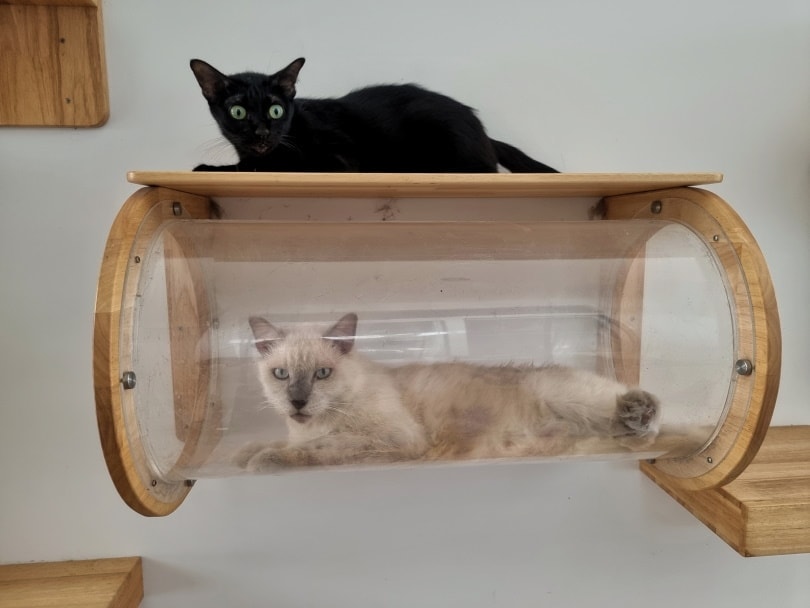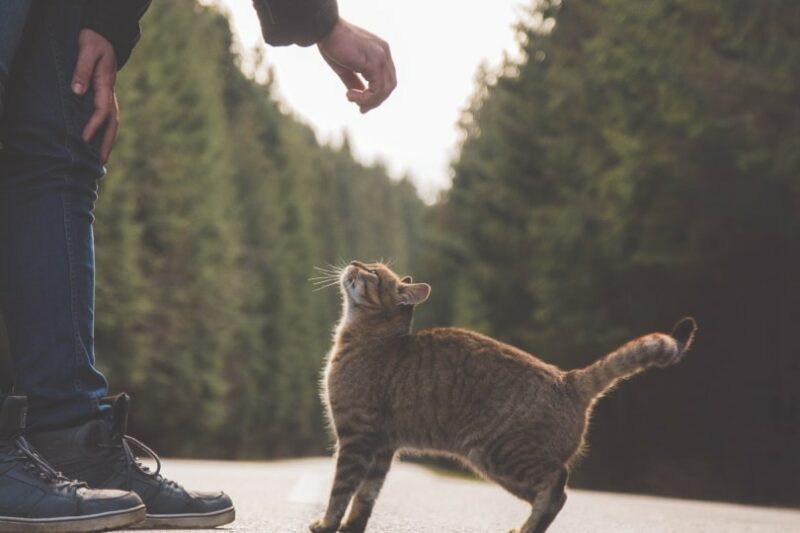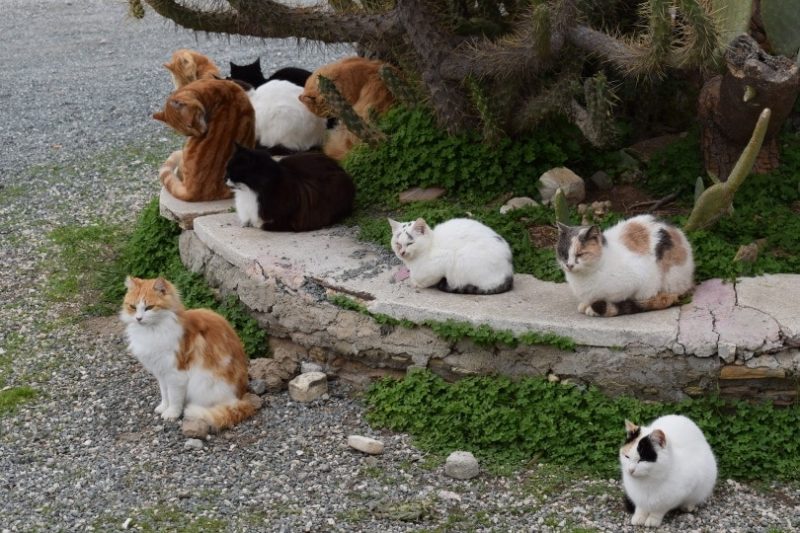13 Cat Breeds Who Love Dogs (With Pictures)
Updated on
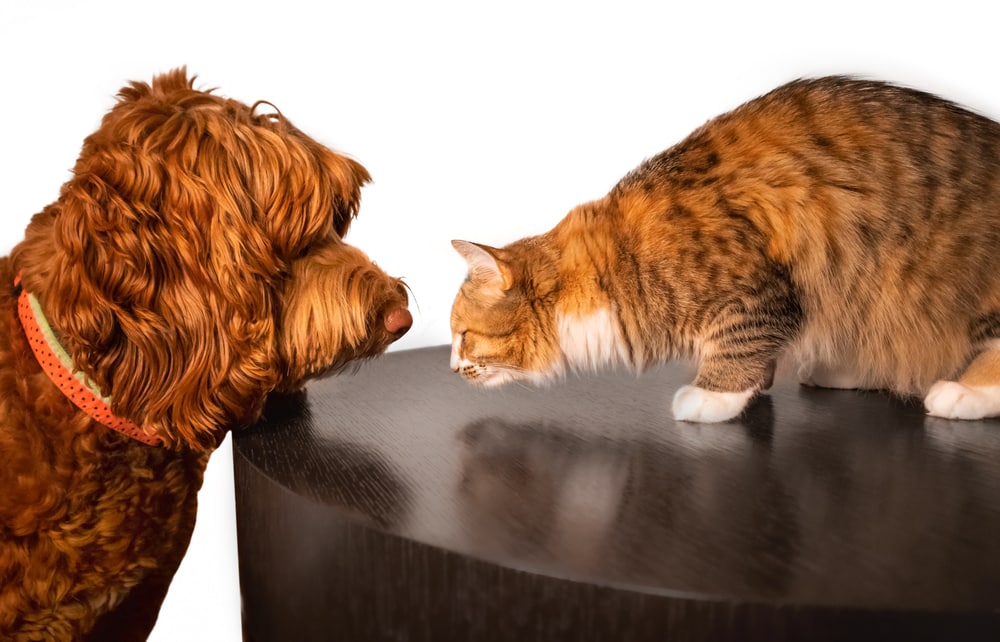
Ever heard the saying, “fighting like cats and dogs?” We’re sure you have, but is this saying accurate? It’s true that some cats do not like dogs and want no part of them in their lives, but not all cats. If you’re considering pairing a feline with your dog or vice-versa, it’s best to know what cat breeds do well with dogs to ensure a successful matchup.
In this guide, we’ve compiled 13 cat breeds that get along with dogs. Let’s check them out!
The 13 Cat Breeds Who Love Dogs
1. Turkish Angora
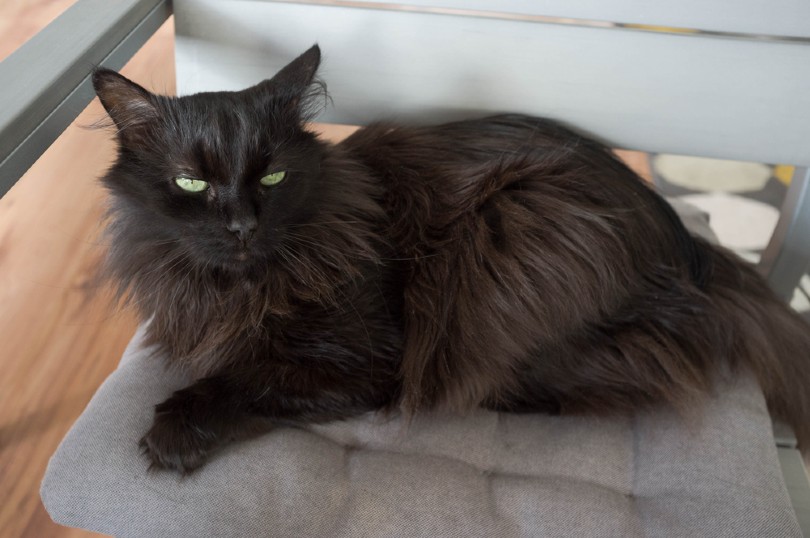
The Turkish Angora is an intelligent cat breed that is loving, playful, and sociable. They are incredibly adaptable and welcome dogs and other furry friends into their lives. One thing to keep in mind, however, is the Turkish Angora has an assertive nature and tends to be the alpha among other pets in the home. Nonetheless, these cats are often the life of any party and welcome visitors with open paws—they are often hilarious and love to entertain guests.
2. Turkish Van
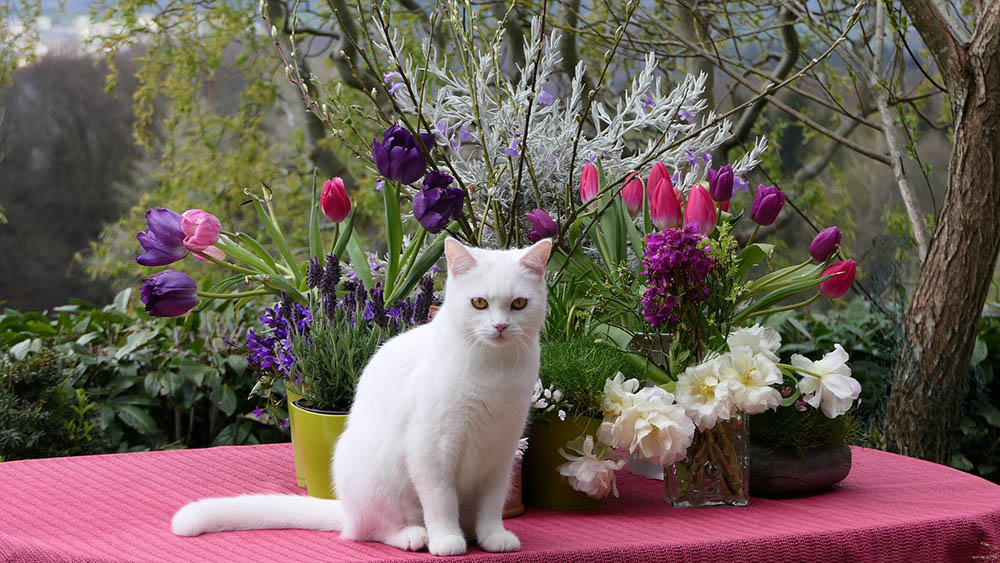
The Turkish Van is energetic, athletic, and playful, which makes them suitable for dogs due to their dog-like nature; these cats even love to swim! Their soft, water-resistant coat allows them to swim easily and comfortably, along with the help of their strong hind legs. If you have a canine kiddo that loves water, the Turkish Van just might be the companion of your dog’s dreams. These cats require a lot of attention, but they are fun and pair well with dogs.
3. American Shorthair
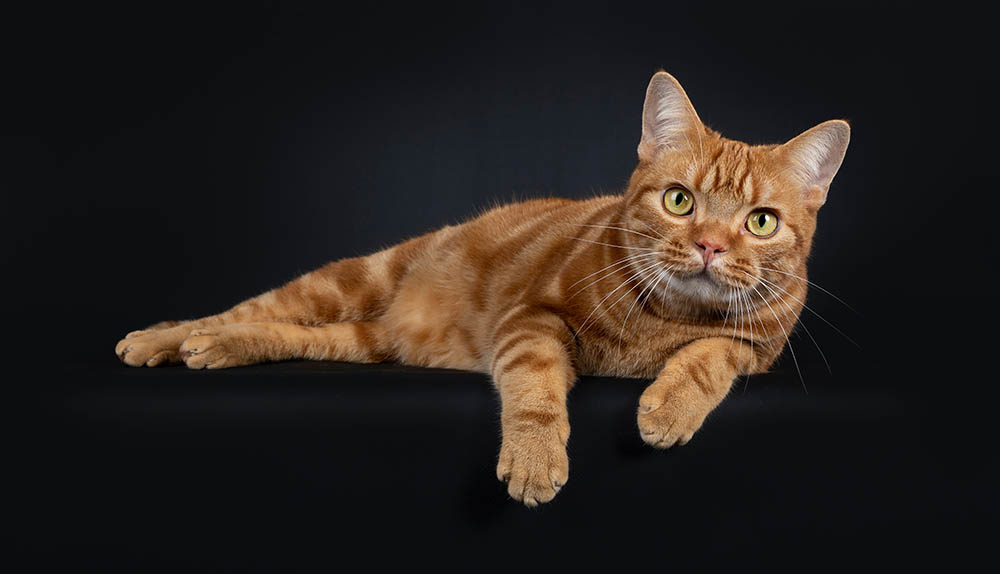
The American Shorthair has a sweet personality and gets along with everyone in the household, including dogs and other furry friends. They are easygoing, affectionate, sociable, and playful. In addition to all of these fantastic characteristics, this cat breed is known for its longevity and strong health—this cat may outlive your dog, as some can live 15+ years.
4. British Shorthair
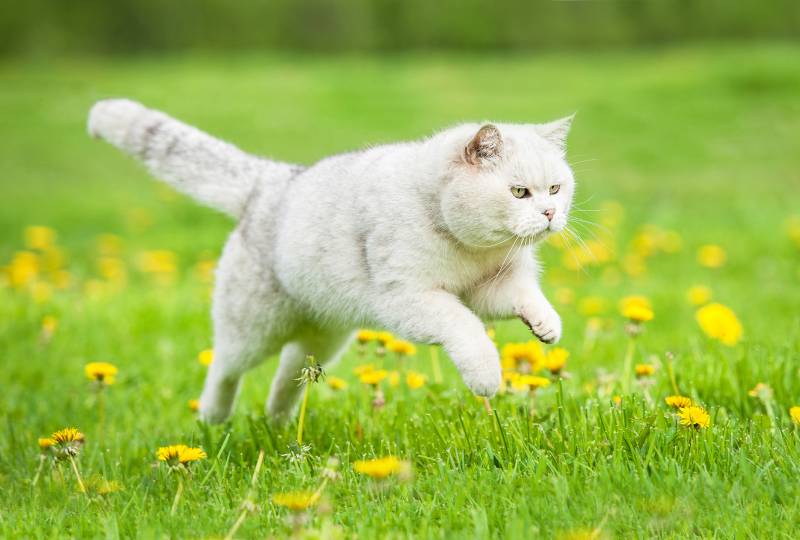
The British Shorthair is unlike other shorthair breeds in that they are calm once they mature. These beautiful cats are affectionate, easygoing, easy to train, and extremely adaptable. They get along well with any other pets in the home and are of medium to large size. Their muscular, heavy body enables them to play with dogs with no problem. The only downfall with these cats is they do not like to be held much.
5. Abyssinian
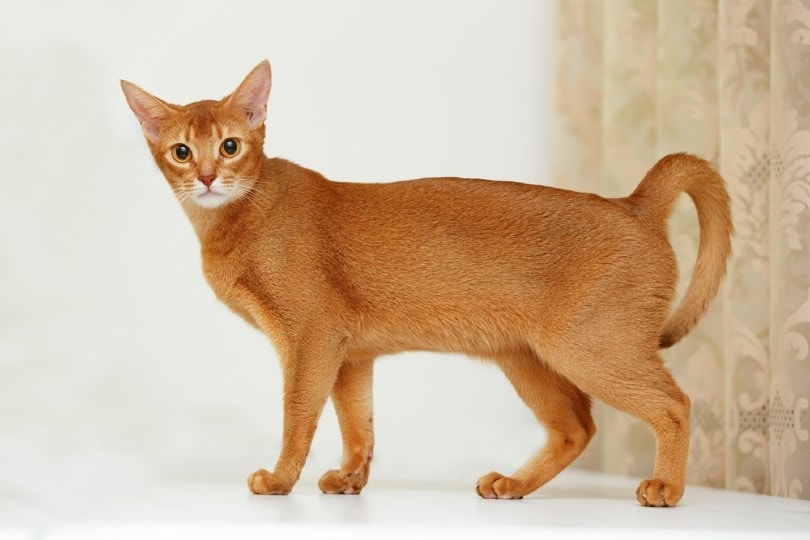
The Abyssinian cat breed is a curious breed that wants to be around you and is very people-oriented. Unlike most cat breeds, they are constantly moving around and have the urge to interact with anything and everything, including dogs. These adorable, large-eared cats can hang with the most active dog, making them excellent canine companions. Loving and affectionate, these cats are easy to care for and will talk to you with a gentle, soft meow.
6. Birman
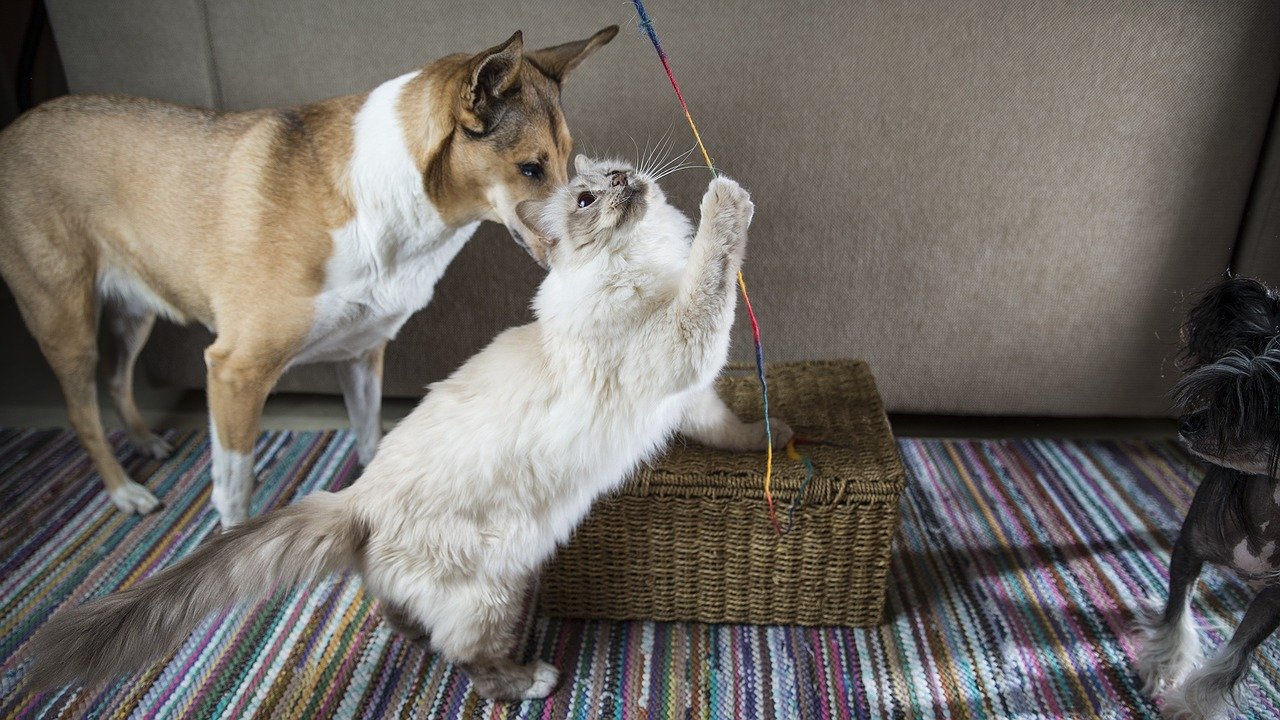
Birman cats have sweet little faces with deep blue eyes and a silky, color-point coat with white feet. They are large cats and somewhat stocky, and they love to play chase and even fetch balls. These dog-like qualities make them a suitable match for dogs, but they can be a little jealous if their human doesn’t pay them much attention. They do, however, like dogs and engage in play with them very well.
7. Ragdoll
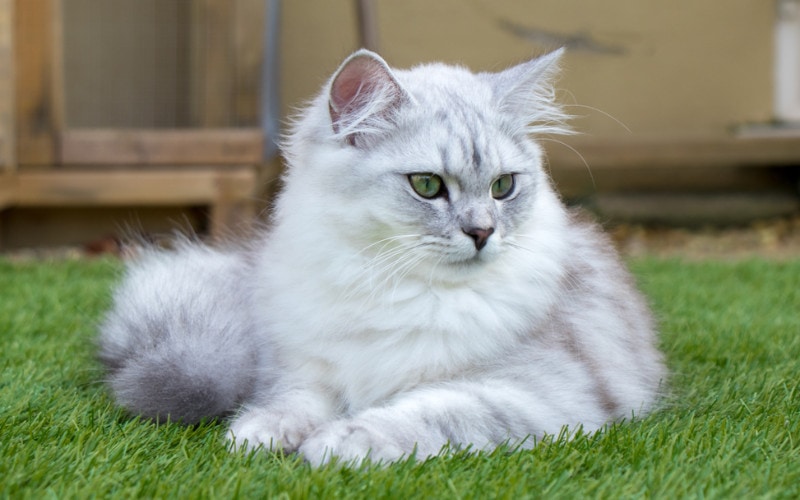
Ragdoll cats have gorgeous blue eyes and a color-point coat, similar to the Birman cat breed. This is a large cat breed; they can weigh up to 20 to 25 pounds. They love people and get along well with other cats and dogs; in fact, they act like dogs. They tend to be laid-back, affectionate, and loving. Much like a dog, they will follow you around the house and even sleep with you.
The Ragdoll likes dogs as companions, and you can even train a Ragdoll to walk on a leash—how cute a sight would it be to see a dog and cat walking together on leashes?
8. Bombay
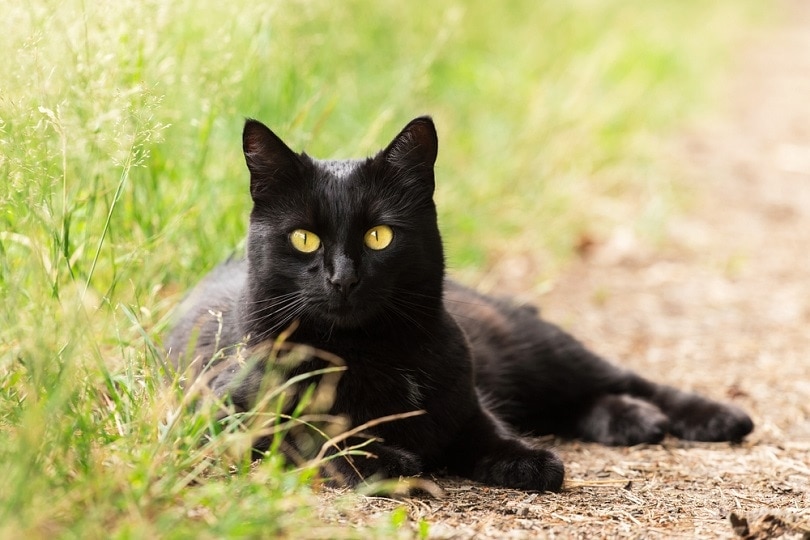
For those who are superstitious about black cats, the Bombay cat may not be suitable for you for that very reason. However, if you can get over the superstition, the Bombay is affectionate and loves to lay in your lap. These solid black cats are playful, fun, gentle, and very tolerant of children; they also love dogs and other cats. They do require adequate attention and are not particularly energetic, but they make excellent companions for doggies and cats alike.
9. Japanese Bobtail

The Japanese Bobtail is one of the more unique cat breeds in that they are very people-oriented and want to be involved in anything you’re doing. Whether watching television, cleaning the house, or greeting guests, the Japanese Bobtail will be your shadow and assist you in whatever you’re doing.
They have a trademark pom-pom tail and get along very well with other cats and dogs—they will also engage in retrieving toys alongside your doggie. They love to play and carry things in their mouths and they just want to be with their family at all times, including their doggie housemate.
10. Maine Coon
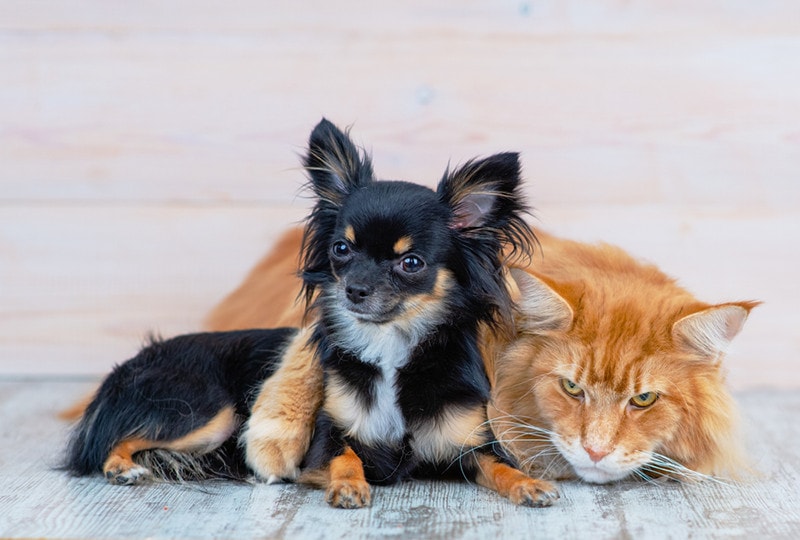
The Maine Coon is a longhaired cat with a shaggy coat that was first recognized in, you guessed it, the state of Maine. Held in high regard for their mouse-hunting skills, these cats are very much dog-like and will play fetch alongside your doggo. They are built for activity with their sturdy frame, and they get along extremely well with dogs and other four-legged housemates. They are easygoing, intelligent, and can be trained to walk on a leash.
11. Norwegian Forest Cat
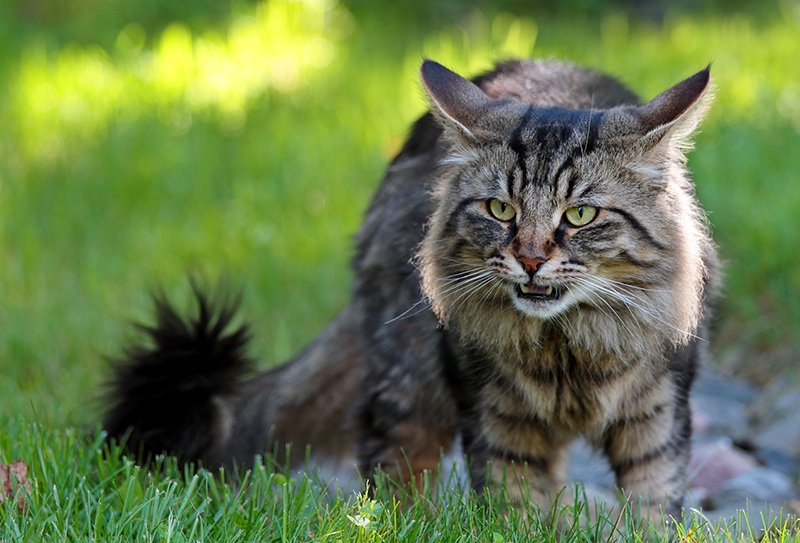
A similar appearance to the Maine Coon, the Norwegian Forest cat has energy bursts after long naps and are active cats; however, they are homebodies and love to hang with their furry companions, including dogs. They are friendly, adaptable, and laid-back. Even though they get along well with dogs, it’s best to introduce the Norwegian cat and a dog when they are both young, as they do better if they grow up with canines—however, this doesn’t discount their adaptability with dogs. They are gentle cats, athletic and playful, and will get along just fine with canines.
12. Siberian
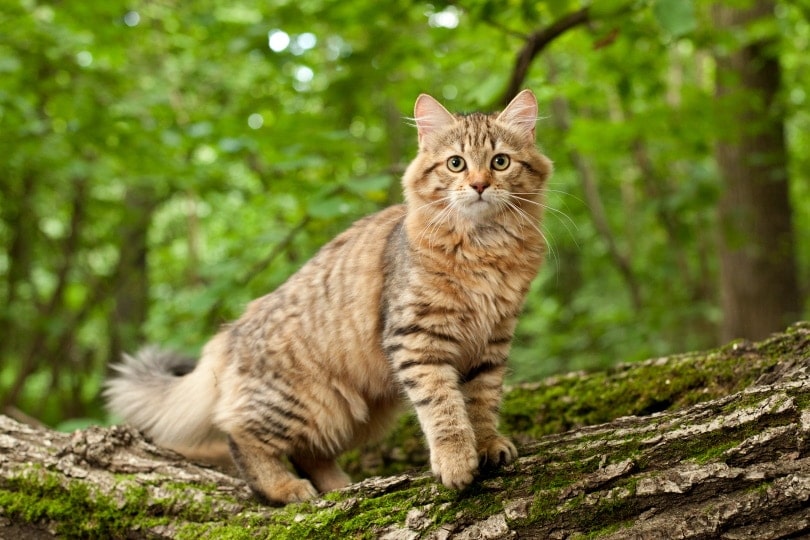
Hailing from Russia, Siberian cats can be a bit mischievous, but they are confident cats that love to be around other cats and dogs. They are intelligent and can learn tricks and commands with ease. They get along well with children and are loyal and lovable. The Siberian also makes an excellent lap cat, as they absolutely adore their humans. They are athletic, playful, and fun.
13. Tonkinese
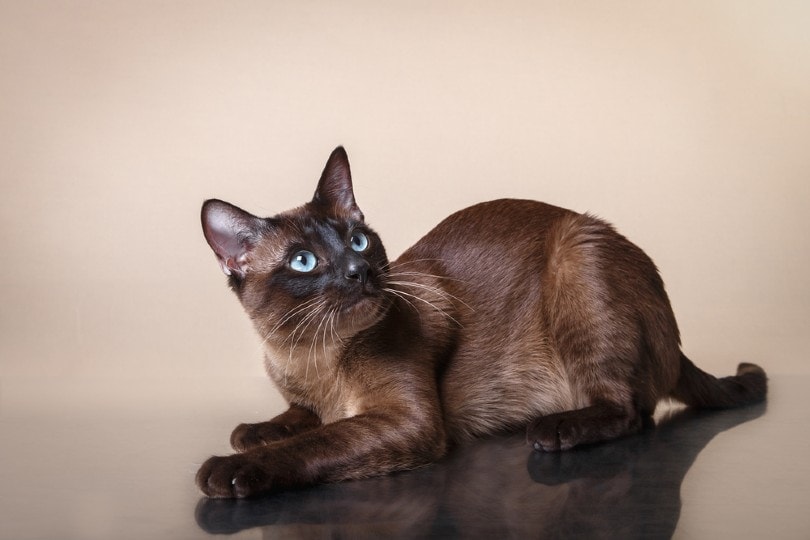
The Tonkinese cat breed comes from Siamese and Burmese ancestry. These vocal cats get along well with dogs and may even jump in vocally when your dog barks. Extremely social and active, these cats are a blast to have around with impressive fetching skills. The Tonkinese is outgoing and affectionate, but they do require lots of attention. They also dislike being alone, but if you have a canine companion for your Tonkinese, all will be fine.
 Conclusion
Conclusion
If you’re a dog owner and want to add a feline to your household, the cat breeds mentioned above will suit your dog well. The last thing you want is to create a stressful situation, and knowing which cat breeds do well with dogs is an excellent first step to narrowing it down. Before introducing your cat to your dog or vice versa, start slowly and don’t force it. Keep them separated at first and let them get used to each other’s smells and presence. Feed at the same time on opposite sides of a door, and keep your dog on a leash during the initial interaction.
With time and patience, your dog and cat will get along peacefully and have fun together. For best results, stick to the breeds mentioned in this article for the greatest chance of success.
Featured Image Credit: sophiecat, Shutterstock

